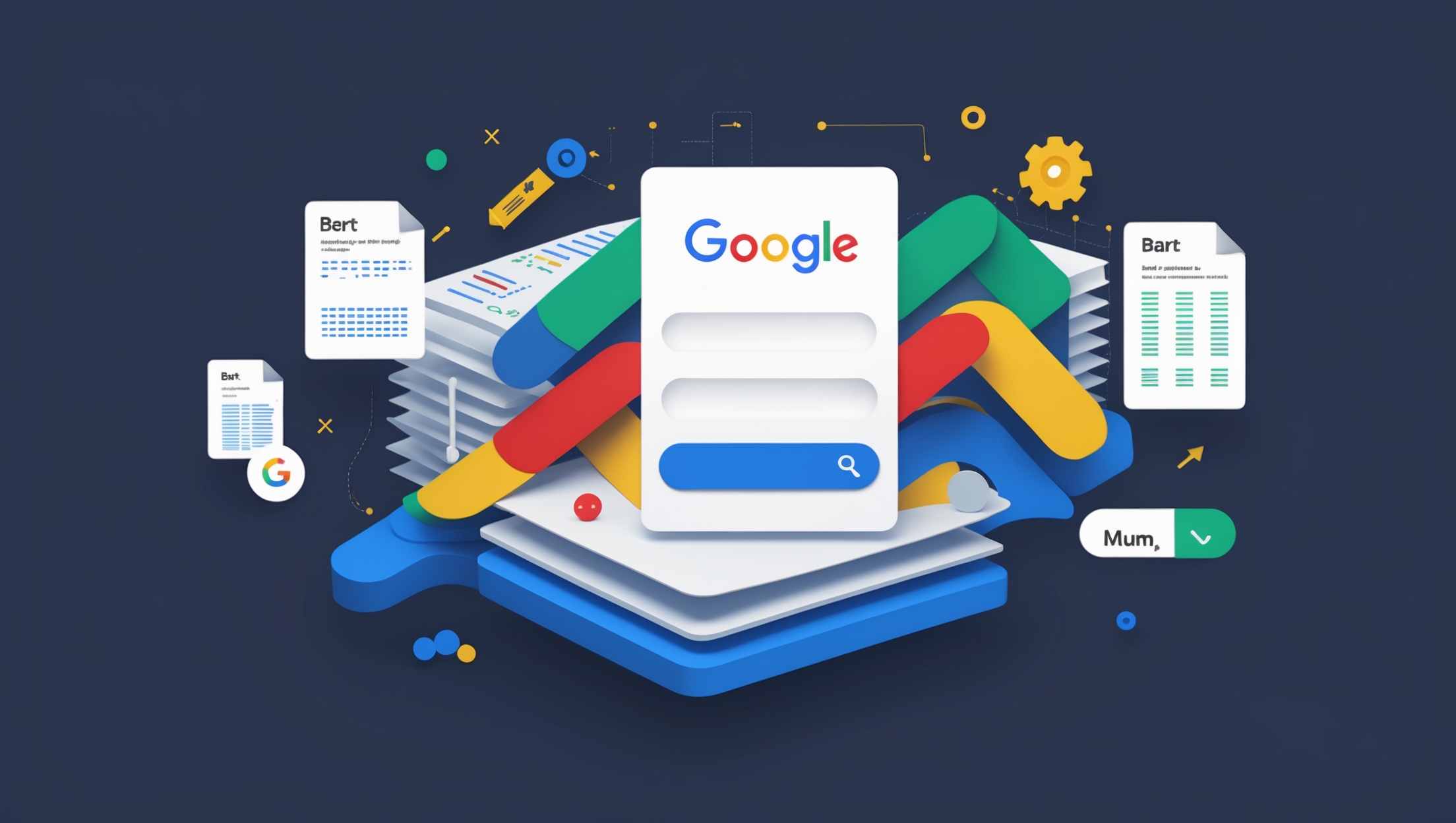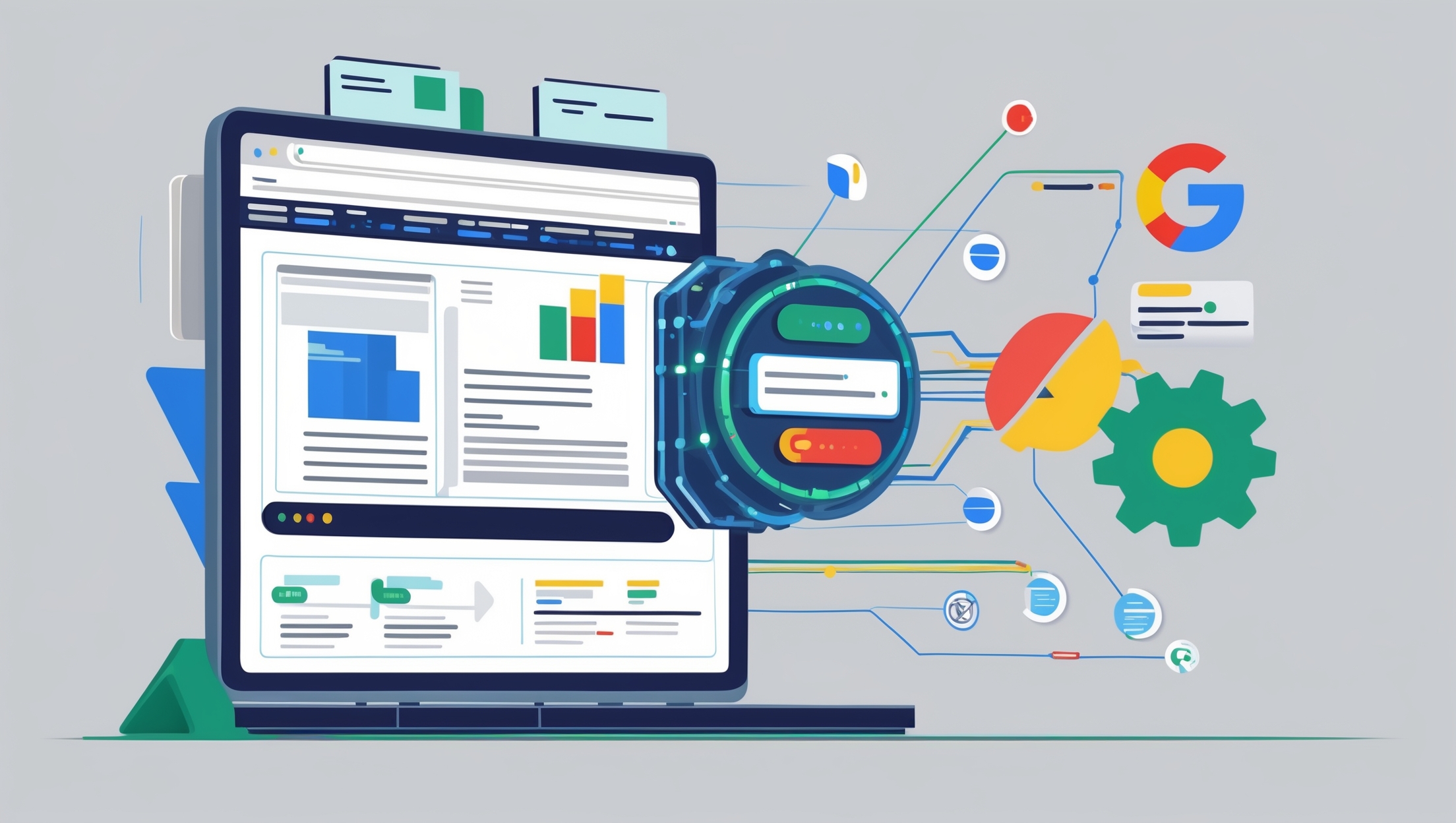Google’s AI Algorithms: What SEOs Need to Know

The Age of AI in Search
Google’s evolution from rule-based algorithms to intelligent systems has completely reshaped how we approach SEO. Today, staying ahead means understanding the role of Google AI algorithms SEO and how they interpret, rank, and present your content.
Gone are the days when stuffing keywords and chasing backlinks could get you results. With AI in Google search engine leading the way, Google can now interpret language, context, and user intent like never before.
These advanced models rely on machine learning in search, adapting in real time based on user behavior, content quality, and search trends. That means your strategy needs to move from reactive to predictive.
If you’re not optimizing for AI search, you're already behind. This article will show you how these systems work, why they matter, and how to align your SEO tactics with Google’s increasingly intelligent ecosystem.
Overview of Google’s Core AI Algorithms

Google’s journey into AI began with a fundamental shift—RankBrain. It was the first time the search engine used machine learning to interpret queries it had never seen before.
RankBrain and SEO changed how keywords were understood by Google. Instead of relying solely on exact-match terms, RankBrain began assessing context, relationships between words, and historical user behavior.
Then came BERT, or Bidirectional Encoder Representations from Transformers. The BERT algorithm SEO impact was massive—it allowed Google to understand natural language nuances like never before.
BERT doesn’t just analyze the keyword; it looks at the entire sentence to determine what the user is actually trying to ask. This made long-tail and conversational queries much easier to match with relevant content.
Fast forward to today, and we now have Google MUM algorithm—short for Multitask Unified Model. MUM goes beyond simple text processing and incorporates images, videos, and multilingual data into one unified understanding.
What makes MUM so powerful is its ability to perform tasks simultaneously. It can compare information across languages, extract insights from different content types, and provide deeply informed search results.
Here's a quick comparison of Google’s major AI systems:
- RankBrain: Introduced machine learning to interpret new queries
- BERT: Improved natural language understanding
- MUM: Multimodal and multilingual processing for complex search tasks
Each of these systems has brought machine learning in search to new heights. Instead of keyword-matching engines, we now interact with a Google that learns, adapts, and personalizes every search.
For SEOs, understanding these models is more than technical curiosity—it’s the foundation for relevance and visibility. Ignoring them means creating content for a version of Google that no longer exists.
These AI advancements aren’t just under the hood—they actively reshape the SERP, featured snippets, People Also Ask, and even voice search responses. To thrive, your SEO strategy needs to evolve in sync with how Google is now thinking.
How AI Powers Search Intent & Query Understanding
When someone types a search into Google, they’re not just entering keywords—they’re expressing intent. Understanding that intent is where Google AI algorithms SEO truly shines today.
Through systems like neural matching, Google can go beyond the literal meaning of a word and uncover what the searcher really wants. For example, if someone types “heart medicine,” neural matching may connect them to “cardiovascular treatments” even if the page doesn’t use those exact words.
This leap forward is made possible by natural language processing SEO. NLP allows Google to read sentences like a human would, understanding grammar, context, and even sentiment.
The better the engine understands language, the more accurate the search results become. And the more your content aligns with this logic, the higher it’s likely to rank.
AI in query understanding means Google doesn’t just see a phrase—it sees a purpose. If someone searches “best shoes for standing all day,” the AI understands it’s an informational query driven by comfort and professional use—not just a product keyword.
Search intent and AI now go hand in hand. You can’t just optimize for what users type—you must optimize for what they mean.
This shift has major implications for content strategy. Instead of targeting isolated keywords, you need to address clusters of related concepts and match the depth of your content to the query’s complexity.
The result? Higher relevance, lower bounce rates, and more satisfied users. And because Google tracks all of that, it reinforces your authority and visibility over time.
If you're not building your content to align with AI-driven intent recognition, you're leaving traffic on the table. The future of SEO belongs to those who can speak Google’s new language—and understand what the searcher is really asking.
The Role of Machine Learning in Google Ranking Systems

The backbone of Google AI algorithms SEO is machine learning. This is the core engine that analyzes billions of search interactions and adapts rankings in real time.
Machine learning in search means Google no longer relies on static ranking rules. Instead, it’s constantly learning from user behavior to determine what deserves top visibility.
This system is fueled by a vast array of AI ranking factors—some public, many unknown. While keywords and backlinks still matter, they’re just a few signals in a far more complex ecosystem.
One of the most significant shifts is the inclusion of user behavior signals SEO. Google tracks how users interact with content to measure relevance and satisfaction.
Here are a few behavior-based inputs machine learning may evaluate:
- Click-Through Rate (CTR): Are users choosing your result over others?
- Dwell Time: How long do they stay on your page?
- Bounce Rate: Do they return to the search results quickly?
- Engagement Depth: Are they scrolling, clicking, or watching videos?
When users consistently engage with your page, Google’s systems take note. Over time, this can lead to better positioning, especially in AI-powered search results where quality is behavior-tested.
This real-time feedback loop allows Google to adjust rankings dynamically—even if traditional SEO elements remain unchanged. That’s why two similar pages can perform very differently, simply based on how users respond to them.
For SEOs, this means optimization goes beyond meta tags or H1s. Your content must satisfy intent, hold attention, and deliver value—because those are the metrics AI is now watching closely.
As Google’s machine learning models grow more sophisticated, the SERP becomes a reflection of what real users prefer—not just what crawlers read. That’s a major mindset shift for anyone building traffic today.
You’re not just optimizing for an algorithm. You’re optimizing for how that algorithm learns from people.
AI-Driven Content Evaluation: E-E-A-T, Relevance & Quality Signals

With modern Google AI algorithms SEO, content evaluation goes far beyond keywords and backlinks. Google’s systems now use artificial intelligence to assess how helpful, accurate, and trustworthy a page truly is.
That’s where AI-driven content evaluation plays a key role. Using natural language processing, machine learning, and intent recognition, Google can measure the depth, originality, and usefulness of your content at scale.
At the heart of this evaluation is E-E-A-T: Experience, Expertise, Authoritativeness, and Trustworthiness. These aren't just buzzwords—they’re critical signals Google uses to determine if your content deserves a high rank.
E-E-A-T and AI work together by analyzing language cues, factual claims, and even author reputation. If your article on financial advice has no expert byline, weak references, or generic explanations, AI systems may view it as less credible—even if it's technically optimized.
But it’s not just about credentials. Relevance and clarity are equally important. Google uses AI to identify if your content addresses the searcher's true question, not just the keyword in their query.
User behavior signals SEO—like time on page, scroll depth, or repeat visits—are also factored in. If people engage with your content and don’t bounce back to the SERP, that’s a strong trust signal to Google’s AI.
Combine this with AI ranking factors like content freshness, structured data, and internal linking, and you get a layered evaluation system that rewards value over volume. Thin content and clickbait headlines may work short term—but they won’t stand the test of intelligent ranking systems.
Ultimately, content quality is no longer subjective. Google’s algorithms are trained to think more like a user than a crawler—and if your content isn’t helpful, they’ll know.
For SEOs, this means you must write for humans, but optimize with machine logic in mind. That’s how you build authority, earn visibility, and win trust in the AI-powered era of search.
Staying Ahead of Google Algorithm Updates (AI Edition)
Trying to keep up with Google AI algorithms SEO can feel like chasing a moving target. With AI driving updates behind the scenes, changes can roll out faster and with less warning than ever before.
The shift to Google algorithm updates AI means ranking systems now learn and evolve continuously. Instead of a few big updates per year, we’re seeing micro-adjustments every week—some even daily.
That’s why it’s critical to future-proof your strategy. Instead of relying on reactive fixes, focus on long-term signals that align with how AI systems evaluate relevance and quality.
Here’s how to stay ahead of these smarter updates:
- Monitor Behavioral Trends: Watch for shifts in how users interact with your pages
- Prioritize Intent Over Keywords: Align content with user goals, not just search terms
- Invest in Topical Authority: Build content clusters that signal expertise
- Track SERP Features: Changes in snippets, FAQs, or video results may indicate algorithmic tweaks
Your SEO strategy for AI algorithms should emphasize adaptability. AI rewards sites that offer consistent value, update regularly, and show clear trust signals.
Another challenge is algorithm transparency Google. The more AI-driven updates become, the less explicit Google is about what changed and why. This creates an environment where testing and pattern recognition matter more than official announcements.
The smartest move? Think like the AI. Understand the goals of AI in Google search engine—to deliver the most helpful, accurate, and engaging result possible.
If your content checks those boxes, algorithm updates become less threatening. They become opportunities to rise while less-prepared competitors scramble to adjust.
Debunking the “Black Box”: Transparency in AI Ranking
For years, SEOs have referred to Google’s algorithm as a “black box.” With the rise of Google AI algorithms SEO, that black box has become even harder to peek into.
AI models are incredibly powerful, but they’re also notoriously complex. Even Google’s engineers admit they can’t always explain why a specific page ranks higher—because AI-powered search results are influenced by constantly evolving models and thousands of weighted signals.
That’s where concerns around algorithm transparency Google come in. SEO professionals want clarity—what’s rewarded, what’s penalized, and why changes happen. But with AI in the driver’s seat, much of that insight is now hidden behind deep learning logic.
Still, this doesn’t mean we’re flying blind. While we may not know every ranking factor, we do know the principles AI is trained to prioritize: helpful content, topical relevance, trustworthiness, and user satisfaction. These aren’t just best practices—they’re encoded into the behavior of AI in Google search engine.
Understanding AI ranking factors becomes less about specifics and more about alignment with intent and quality. Think of it like a compass rather than a map—pointing you in the right direction without prescribing every step.
The good news? AI is consistent once you understand how it behaves. It rewards patterns of value. If your site consistently publishes helpful, original, and user-focused content, the AI will learn to trust it—even if you’re not hitting every traditional SEO checkbox.
Transparency may never return to the “10 blue links” era. But that doesn’t mean you can’t work with the system effectively. The more you test, measure, and learn, the more predictable those AI-driven outcomes become.
In the end, the best way to beat the black box… is to become fluent in how it thinks.
Actionable SEO Tips for Optimizing Content for Google’s AI

If you want your content to succeed in an AI-first search landscape, you have to optimize for how Google understands language, context, and meaning. That means shifting from old-school keyword targeting to a more intent-driven, semantically rich content strategy.
Start by leaning into semantic search optimization. Google’s models don’t just match words—they interpret them. So your content needs to speak fluently in the language of topics, not just terms.
Next, consider how natural language processing SEO has changed how content is evaluated. Google's systems now understand sentence structure, related concepts, and even tone. Write like you’re speaking to a person, not stuffing a page for bots.
Understanding search intent and AI also helps you create the right type of content for each query. Are users asking a question? Looking to buy? Needing a quick definition? Your format and content depth should match that intent.
Here are some practical ways to align your content with AI expectations:
- Use question-based headers: Help NLP models detect structure and match queries to answers
- Expand semantically: Cover subtopics, related terms, and context to build topical depth
- Optimize entities, not just keywords: Mention people, places, products, and categories clearly
- Include internal links with intent cues: Guide crawlers and users deeper into your site
Your overall SEO strategy for AI algorithms should focus less on chasing trends and more on building high-quality, interconnected content ecosystems. This means creating clusters of content around a core topic and establishing yourself as a trusted source in that space.
Don’t forget about structure either. Use clean code, proper headings, and schema markup where relevant—these help AI read and interpret your content more effectively.
As the search engine becomes more like a smart assistant, your job is to make content that’s not only accurate, but also intuitively useful. Anticipate the question behind the query, and deliver the best answer on the page.
That’s the future-proof way to win visibility—no tricks, no gimmicks, just smarter content for a smarter search engine.
Conclusion: Embrace the Shift, Evolve with the Algorithms
Google’s transformation into an AI-first search engine isn’t coming—it’s already here. From how queries are interpreted to how content is ranked, artificial intelligence is now embedded in every step of the search journey.
For SEOs, this is both a challenge and an opportunity. You can no longer rely on outdated tactics or hope to game the system. Success depends on building an SEO strategy for AI algorithms—one rooted in user intent, content quality, and topical depth.
Understanding how AI in Google search engine works allows you to create content that aligns with the way algorithms now think. That means writing for clarity, structuring for discoverability, and focusing on real value, not just keyword metrics.
It also means leaning into semantic search optimization. Google is prioritizing relevance and context over repetition, rewarding content that speaks to broader concepts and real-world user needs.
And while many AI ranking factors remain hidden, the overarching goal remains clear: serve the searcher better than anyone else. If your content consistently meets that goal, the algorithms will reward you—now and in the future.
The takeaway? SEO is no longer just about visibility. It’s about understanding the mind of the machine, anticipating its expectations, and delivering a user experience it wants to show the world.
Adapt to the shift. Embrace the intelligence. And evolve your content strategy for the search engine of tomorrow.
FAQs – Google’s AI Algorithms & SEO
1. What is RankBrain and how does it impact SEO?
RankBrain was Google’s first AI-powered system for interpreting search queries, launched in 2015. It helps Google understand the intent behind unfamiliar or ambiguous queries, making content relevance more important than exact keyword matches.
2. How does the Google MUM algorithm differ from BERT?
The Google MUM algorithm processes information across multiple formats—text, image, and language—to deliver deeper search results. Unlike BERT, which is limited to text comprehension, MUM can compare complex data types and languages at once.
3. How can SEOs adjust their strategy for AI-driven updates?
To build an effective SEO strategy for AI algorithms, focus on helpful, intent-matching content backed by authority and structure. Stop chasing individual keywords and start building topic clusters that answer real user needs.
4. Are AI-powered search results more volatile than before?
They can be. Since AI-powered search results are adjusted continuously based on user behavior and machine learning feedback, rankings may shift more frequently—even with no visible algorithm update.
5. Does Google reveal how its AI systems rank pages?
Not entirely. While Google offers general guidance, it rarely discloses specifics—especially for complex models like RankBrain or MUM—leaving SEOs to analyze patterns and optimize based on observed behaviors.

